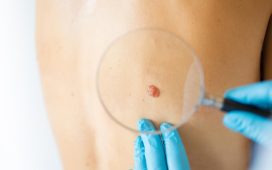PTNM staging system proposed to help communicate disease states including PD component, trauma component, non-PD component, and mode
By Elana Gotkine HealthDay Reporter
WEDNESDAY, Aug. 21, 2024 (HealthDay News) — In a review published in the June issue of The Journal of Urology, a staging system is proposed for establishing Peyronie disease (PD) subtypes and non-PD penile curvature classifications.
In an effort to improve the classification of PD and non-PD penile curvature, Landon Trost, M.D., from the Male Fertility and Peyronie’s Clinic in Orem, Utah, and colleagues conducted a retrospective review of 1,098 men who presented with penile deformity. A second cohort of 719 men was used to examine the relapsing/remitting subtype.
Four distinct subtypes of PD were identified: classical and nonclassical; calcifying; progressive; and relapsing/remitting, with reactivation following at least six months of stability. Non-PD categorizations included congenital, maturational, and trauma induced. The authors found that penile pain was not a reliable predictor of disease progression or stability. The definition of stable phase disease varied by subtype: classical (at least three months) or progressive, calcifying, or trauma induced (at least 12 months plus at least three months stable or at least six months stable). At at least three months following disease onset, PD subtypes could be assigned. To help communicate disease states, a PTNM staging system was proposed: P = PD component (calcifying, classical, progressive, relapsing/remising, undifferentiated); T = trauma component (present or absent): N = non-PD component (congenital, maturational, undifferentiated); and M = mode (stable or active).
“We believe our proposed PTNM system will be clinically helpful in the evaluation and management of men with penile curvature,” Trost said in a statement. “This information has the potential to improve prognostic information, enhance patient counseling, and facilitate treatment decision-making for patients with PD, as well as guiding further research.”
Editorial 1 (subscription or payment may be required)
Editorial 2 (subscription or payment may be required)
Copyright © 2024 HealthDay. All rights reserved.








